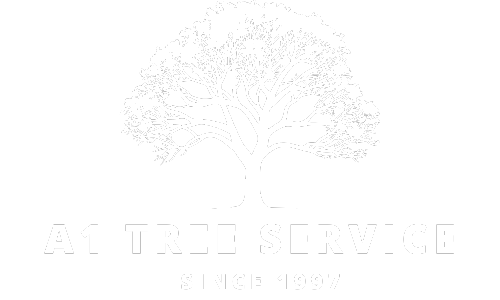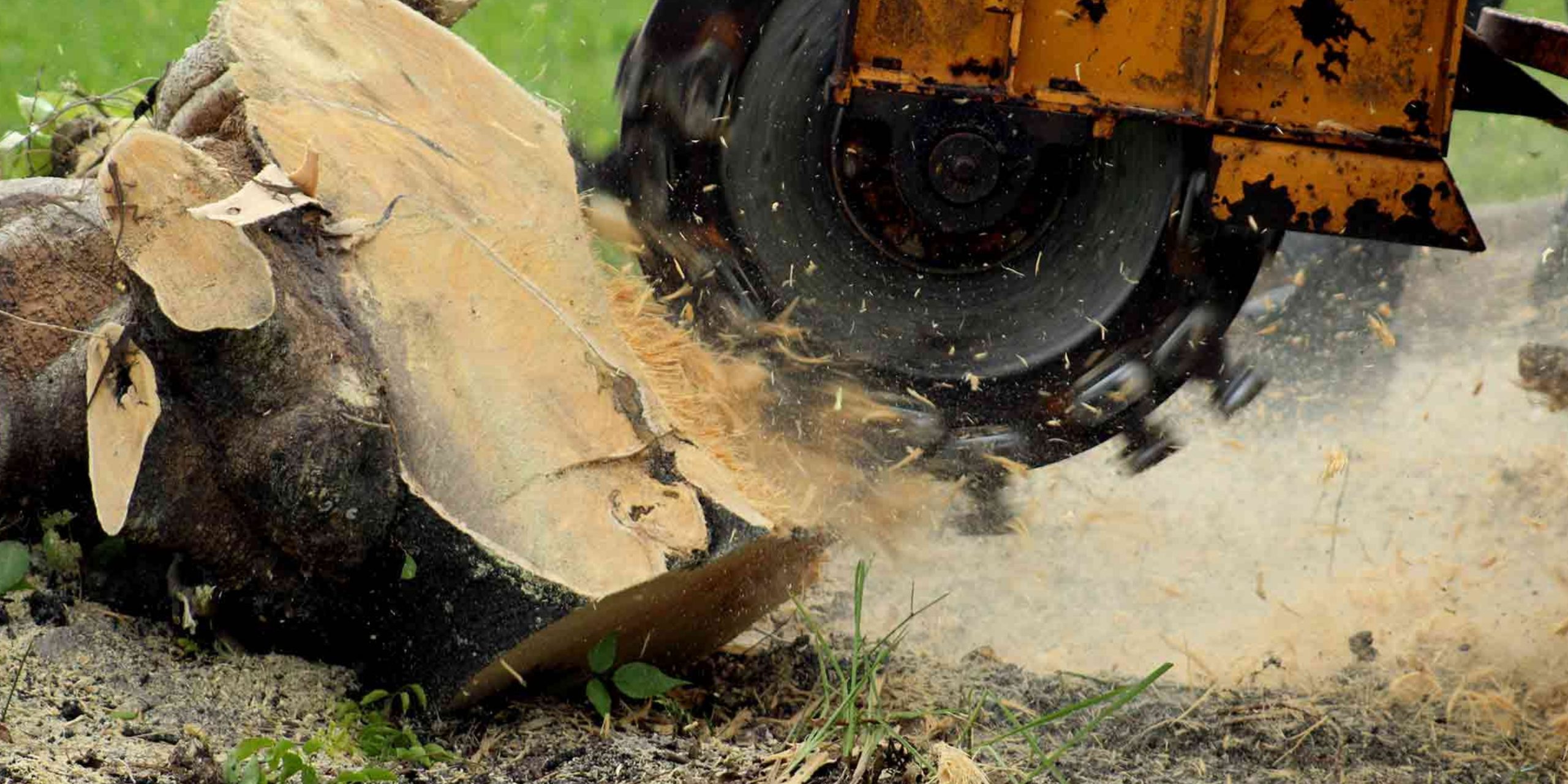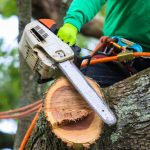Cutting down a tree trunk may be a difficult process; however, with the proper tools, methods, and safety measures, you can do it successfully. We will talk about how to safely remove a tree trunk and guide you through the necessary processes including preparation, removal, and clean up after the removal is done.
What is the Reason to Remove a Tree Stump?
There are a number of reasons to remove a tree trunk:
Landscaping or Construction: Eliminating the stump makes room to engage in new landscaping activities, construction of buildings, or other infrastructures.
Safety: A rotting or broken trunk may be a safety issue; it can cause someone to fall and can attract pests.
Aesthetic: Removing stumps are not pretty and they might even ruin the beauty of your garden or yard.
Regardless of the cause, proper removal of a tree trunk will guarantee that your yard will be safe and attractive.
Equipment Required to Cut Tree Trunks
Collect the appropriate tools before initiating the removal process.
You may require the following depending on the method you opt to use:
Chainsaw: To cut the tree trunk and take away bigger pieces of the trunk
Shovel: To dig around the stump
Mattock or Axe: To loosen the roots and the soil
Hand Saw: In case the trunk is too thick to be cut using a chainsaw
Stump Grinder: If you would like to grind down the stump when the trunk is cut
Wheelbarrow or Dump Truck: To remove the waste
Safety Gear: Gloves, goggles, and hearing protection to stay safe
Procedures to Cut Down a Tree Trunk
Clear Area
Ensure that there are no obstacles around the trunk of the tree before you commence. Clear any furniture, tools, or vehicles. This will provide you with a clean area to work with and reduce chances of accidents. When the tree is close to buildings, be careful not to damage those buildings, fences, or utilities.
Chop the Tree Trunk
Start at the base: To begin, you should cut through the trunk with a chainsaw. Cutting should always commence with the bottom of the tree, and youi should cut along the natural grain of the timber.
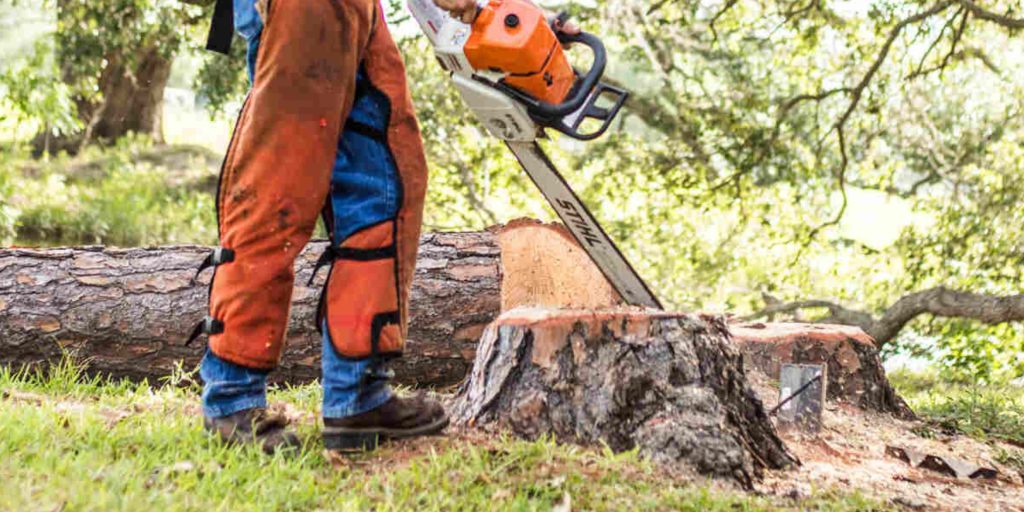
Cut in sections: Divide the work into small pieces. Cut carefully, either up or down, in accordance with where you began.
Apply the proper technique: For safety, you should stand at a stable angle and make sure your chainsaw is at full speed before making each cut. Make sure the blade of the chainsaw is sharp.
Dig Around the Tree Stump
After the tree trunk has been cut out, the tree stump will be the next issue to deal with. If you are only interested in removing the stump, then you can dig around it to expose the roots and begin the removal procedure.
Shovel: Use a shovel to dig around the stump in order to reveal the root system. Going deep enough will enable you to sever the larger roots that are holding the stump in the ground.
Mattock or axe: When you have loosened the soil around the stump, then use a mattock or axe to chop the larger roots. Circle the stump and cut or break as many of the roots as possible.
Cut Through the Root
After the roots have been exposed, cut through them. Depending on the size and the way the roots are fixed to the soil, you can work with a number of tools:
Chainsaw or hand saw: On bigger roots, a chainsaw or hand saw can be used to cut in a clean manner. Begin by removing the biggest roots and proceed to the smaller ones.
Pruning Saw: Smaller roots are cut using a pruning saw to make quick cuts. Make every cut as close to the stump as you can, so as not to leave long root stubs.
Cut Out the Stump
Once the roots are cut, the stump can be removed from the ground. This can be done in a couple of ways:
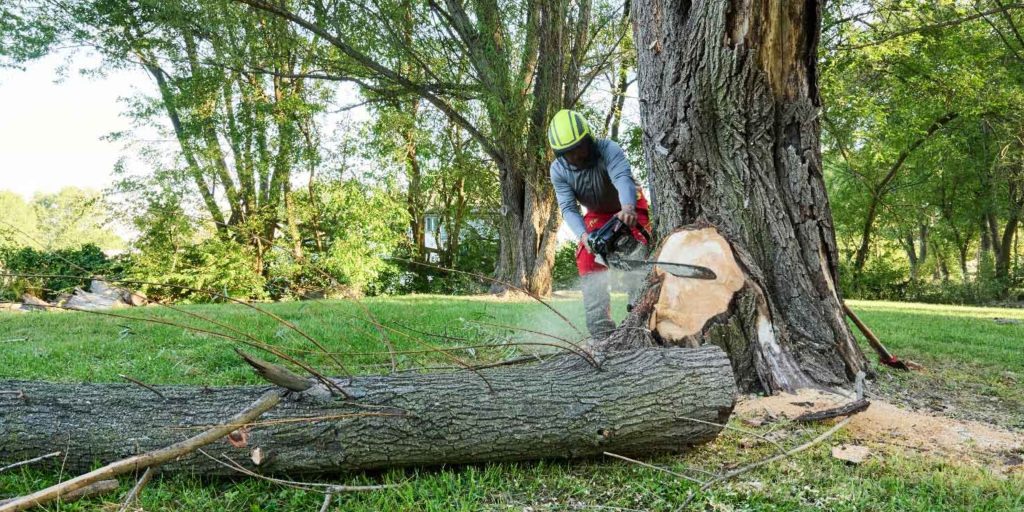
Manual Removal: If the stump is small and the roots are not very deep, you can remove the stump manually. Carefully push, pull, and rock the stump to loosen it from the ground. You may need to pry out the stump with a crowbar.
Stump Grinder: A stump grinder may be used to accelerate the process when dealing with bigger stumps. A stump grinder is a machine that grinds the stump into small wood chips using a rotating blade. This is a good tool to use on large, obstinate stumps, and it is commonly employed by professional tree removal businesses.
Remove Tree Stump and Tree Trunk
After the tree trunk and stump are removed, you will have to clear the debris.
Disposal can be done in a number of ways:
Chipping: If you have a chipper, you can convert the trunk into mulch. This is an excellent idea of recycling the wood and putting it back into the landscaping.
Hauling Away: You may require a cart to remove the debris and bring it to a landfill or composting site. The large pieces can be transported by using a wheelbarrow or dump truck.
Burning: You can opt to burn the left over stump, provided it is permissible in your locality. Ensure that you do this after consulting the local regulations and safety rules.
Fill the Hole
When the stump and the trunk are removed, a big hole in the ground will remain. To rehabilitate the area, fill the hole with soil. Compact the soil to make sure that it settles and forms a level surface.
